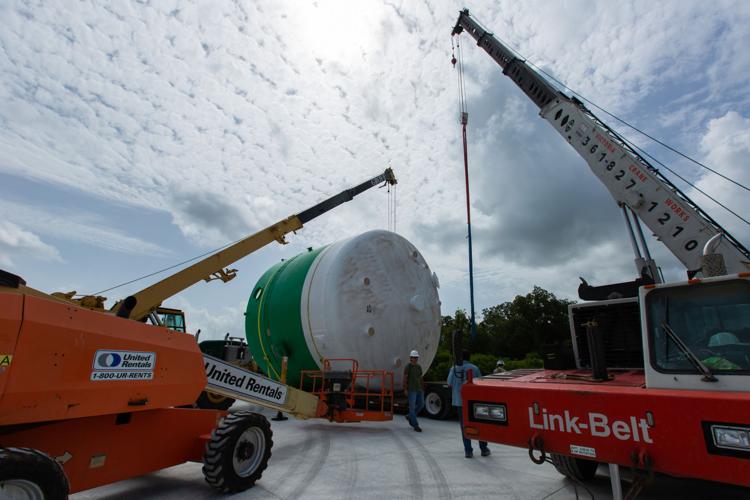The following guidelines for handling and lifting of FRP tanks are summaries of those in the Diamond Fiberglass document “FRP Tank Handling and Installation Instructions” Rev. 7. However, each tank lifting plan must take into account all of the factors in each particular situation. Ultimately, lifting plans are the responsibility of the contractor, not the tank fabricator. The following guidelines offer or imply no guarantees or warranties whatsoever.
Prior to offloading, tanks should be carefully inspected both inside and out. Look for any signs of breakage, abrasion, shifting or rotation that may have resulted in damage to a tank. If shipping cradles are used, check for any signs that they may have moved, shifted or rotated resulting in cracks or crazes at point of contact. Check each fitting for cracks, gouges, and dents. All fittings should be secured to the tank without any play and should not be able to move when testing force is applied to them.
If damage is discovered, contact Diamond Fiberglass before attempting to unload the material. If a tank must be unloaded immediately, do not set it in the vertical position as it would make the damage much more difficult to access and repair.

Diamond Fiberglass tanks are designed to withstand normal handling procedures, but hoist operators should always know and follow proper rigging procedures. Do not allow cables, hooks or spreader bars to swing against tanks. Care should be taken to prevent tanks from swinging out of control. Always lift – never roll or slide a tank. Never use cables or chains around the tank, and never lift a tank by using fittings or appurtenances other than the lifting lugs. When lifting lugs are not provided as part of the equipment, woven fabric rigging slings of 3-inch minimum width are recommended.
When moving a tank, do not drop or allow hard impact. Never let tools strike or drop on either the inside or the outside of the tank. Ladders used inside tanks must have rubber foot protectors, and workers entering tanks should wear soft-soled shoes.
In storing tanks prior to installation, tie down securely. Tanks should be placed only on firm level surfaces which are free of stones, fasteners, and other small hard objects. Tanks should be stored horizontally and supported on the top and bottom “knuckle” ends only and never in the middle of the sidewall. When stored outdoors, tanks should be adequately secured to prevent movement due to wind or water flotation.
For further information, please contact Diamond Fiberglass (diamondfiberglass.com).
